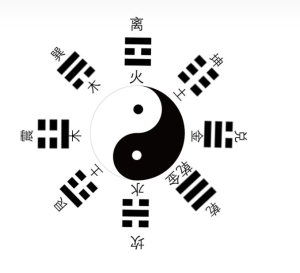Bagua is born from the Taiji, the two yi, and the four elephants, “the four elephants give birth to the eight trigrams”. It is also an esoteric concept of ancient Chinese culture, a set of metaphysical and philosophical symbols composed of three sets of yin and yang. Its profound philosophy explains natural and social phenomena. Eight gossip into a list, like in which carry on; and thus heavy, lines in which carry on; just and soft push, change in which carry on; Department of rhetoric and order, move in which carry on. Eight trigrams into a list of the basis of the image, the basis of heavy trigrams lies in the lines change, “lines in which carry on” is the internal motive of the flow of Yi Dao. Eight trigrams that things themselves change the yin and yang system, with “—” on behalf of the Yang, with “- -” on behalf of the Yin, with the two symbols, in accordance with nature’s yin and yang changes in parallel combinations, composed of eight different forms, called gossip. Bagua is actually the earliest written expression of the symbol.

Each trigram shape represents a certain thing. Qian on behalf of the sky, Kun on behalf of the earth, Xun (xùn) on behalf of the wind, Zhen on behalf of the thunder, Kan on behalf of the water, Li representative of the fire, Gèn on behalf of the mountain, Dui on behalf of the zephyr. Bagua is like eight infinite invisible pocket, the universe of all things are loaded into the gossip with each other and become 64 hexagrams, used to symbolize a variety of natural phenomena and personnel phenomena, based on today’s society, a lot of things; gossip in Chinese medicine refers to around the palm around the eight parts of the general term. Bagua on behalf of the Yi culture, permeated in all areas of East Asian culture.